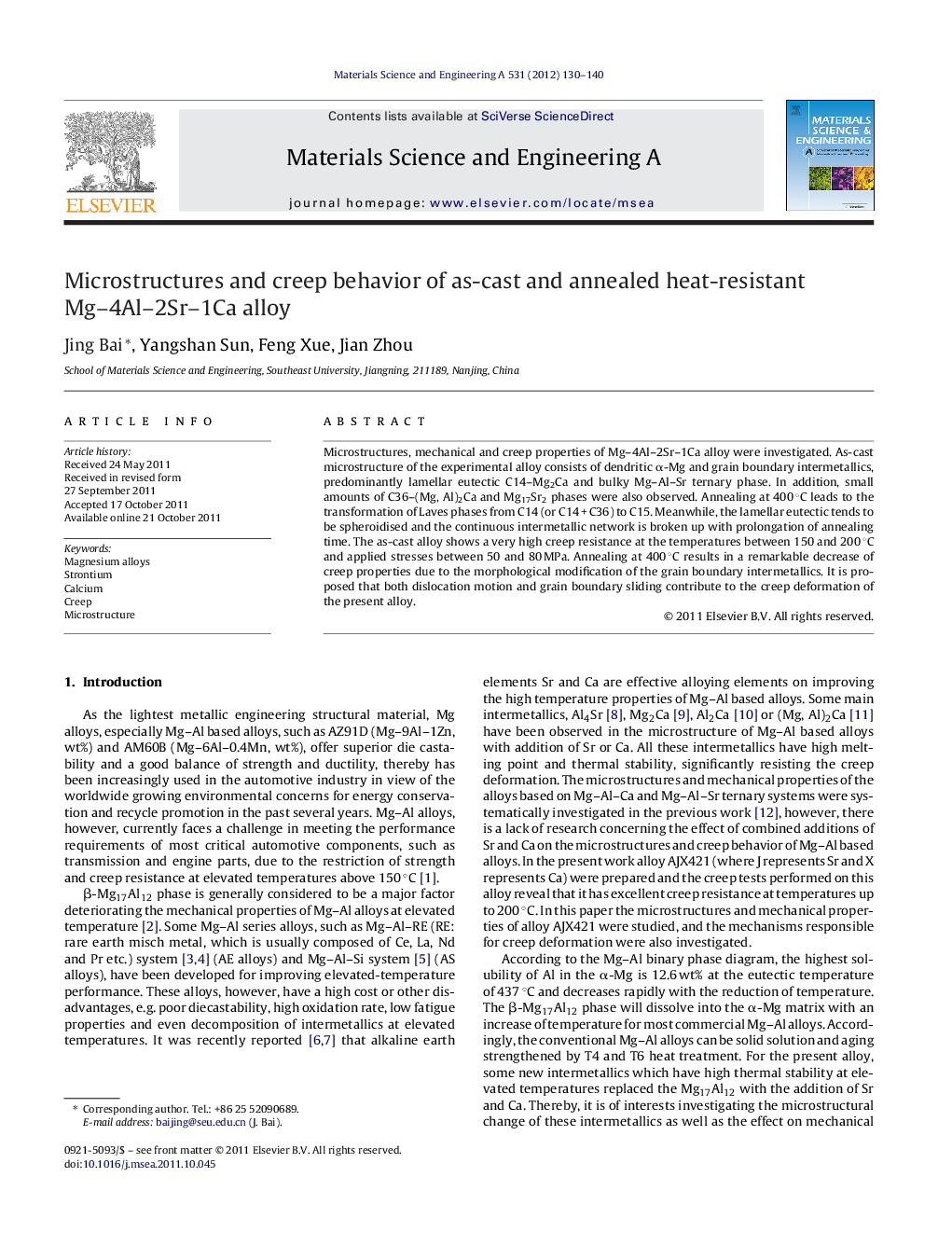| Article ID | Journal | Published Year | Pages | File Type |
|---|---|---|---|---|
| 1577940 | Materials Science and Engineering: A | 2012 | 11 Pages |
Microstructures, mechanical and creep properties of Mg–4Al–2Sr–1Ca alloy were investigated. As-cast microstructure of the experimental alloy consists of dendritic α-Mg and grain boundary intermetallics, predominantly lamellar eutectic C14–Mg2Ca and bulky Mg–Al–Sr ternary phase. In addition, small amounts of C36–(Mg, Al)2Ca and Mg17Sr2 phases were also observed. Annealing at 400 °C leads to the transformation of Laves phases from C14 (or C14 + C36) to C15. Meanwhile, the lamellar eutectic tends to be spheroidised and the continuous intermetallic network is broken up with prolongation of annealing time. The as-cast alloy shows a very high creep resistance at the temperatures between 150 and 200 °C and applied stresses between 50 and 80 MPa. Annealing at 400 °C results in a remarkable decrease of creep properties due to the morphological modification of the grain boundary intermetallics. It is proposed that both dislocation motion and grain boundary sliding contribute to the creep deformation of the present alloy.
► Determining the intermetallics of the Mg–4Al–2Sr–1Ca alloy in as-cast and as-annealed state. ► Grain boundary phases play an important role during creep. ► The combination of dislocation motion and grain boundary sliding contributes to the creep deformation at high temperature.
